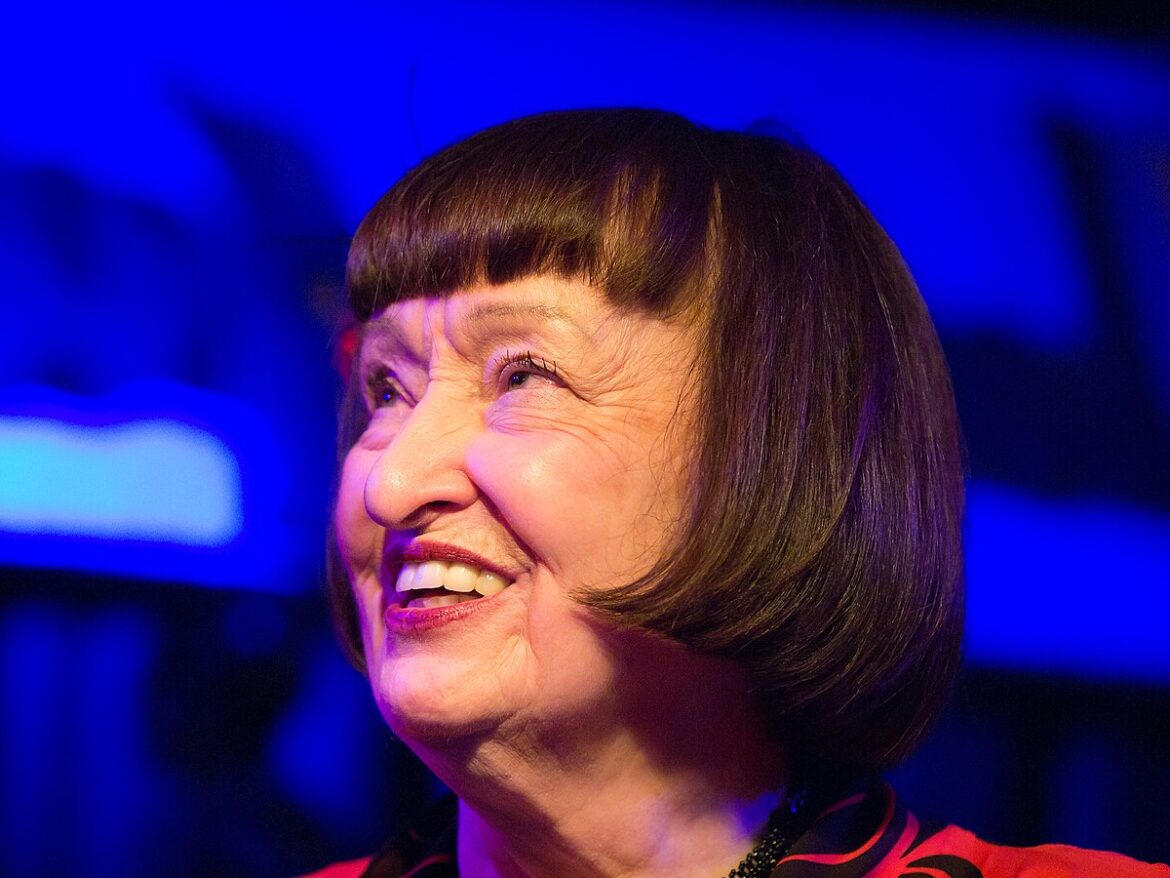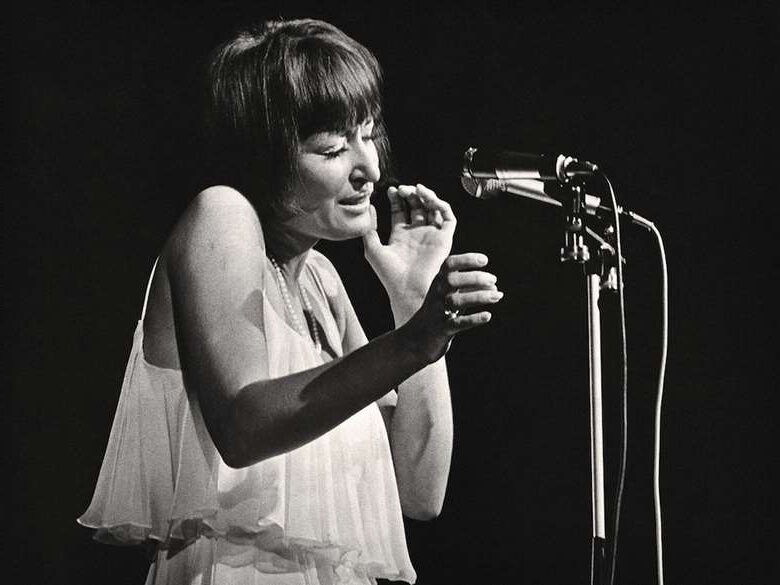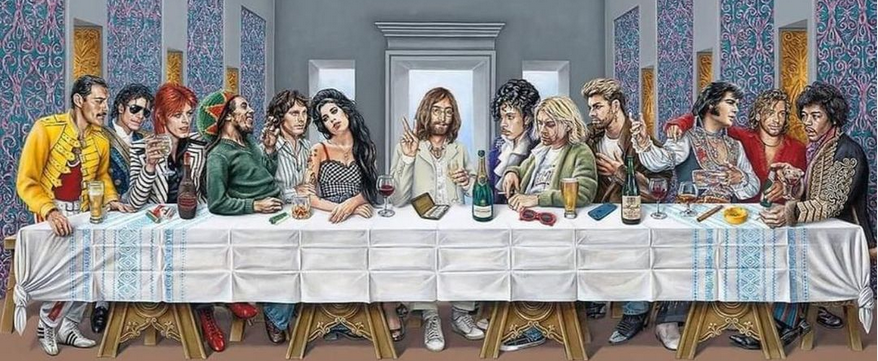
Sheila Jordan (1928–2025): A Life in Jazz
A Voice Born from Adversity
Sheila Jeanette Dawson was born on November 18, 1928, in Detroit, Michigan. Her childhood was marked by instability: her father disappeared shortly after her birth, and her mother battled alcoholism. Sheila spent much of her early life with her grandparents in Summerhill, Pennsylvania, a small coal-mining town defined by poverty and struggle. The emotional and economic hardships of her youth left a lasting imprint on her sense of resilience and on the deep emotional timbre of her music.
She often recalled that singing became her means of survival. In an environment that provided little comfort, music offered her a sense of hope and expression. By the time she was a teenager, Sheila had already realized that singing was not a choice but a necessity.
At around age 14, she returned to Detroit, where she began performing semi-professionally in clubs. She played piano and sang in small venues, laying the groundwork for the unique improvisational voice she would soon develop.
Bebop: A Musical Awakening
One pivotal moment changed the course of Sheila’s life: hearing Charlie Parker’s recording of “Now’s the Time” on a jukebox. She described it as an awakening, instantly recognizing that this was the music she wanted to devote her life to. Bebop’s daring energy, complexity, and freedom matched something inside her, and she resolved to follow Parker’s path with fierce dedication.
Her admiration was reciprocated. Parker, recognizing her innate musicality, famously referred to Sheila as “the lady with the million-dollar ears.” His words validated her journey and solidified her decision to dedicate her life to jazz. The influence of bebop would permeate every note she ever sang, shaping her into one of the most distinctive improvisers in the history of the music.
New York Scene: Freelance to Flourish
In 1951, Sheila moved to New York City, where she immersed herself in the city’s vibrant postwar jazz scene. She studied with innovators such as Lennie Tristano and Charles Mingus, sharpening her ear and deepening her understanding of improvisation. Her nights were spent in clubs and late-night jam sessions, where she sang alongside musicians like Herbie Nichols, Mingus, and Parker himself.
She became known for her ability to weave her voice seamlessly into the dense, angular lines of bebop instrumentalists. Unlike many singers of her era who adhered to more traditional balladry, Sheila approached her voice as an instrument in its own right—horn-like, rhythmically adventurous, and fearlessly improvisational.
In 1952, she married Parker’s pianist, Duke Jordan. The marriage produced a daughter, Tracey, but it was marred by Duke’s heroin addiction and eventually ended. Sheila was left to raise her daughter largely on her own while still chasing her artistic dreams.
Balancing Motherhood and Music
Motherhood brought new challenges. To support herself and Tracey, Sheila Jordan worked as a typist and legal secretary during the day. At night, she would hire babysitters and sing in clubs, often returning home in the early morning only to rise again for work. The strain was immense, but her commitment to both her daughter and her music never wavered.
This balancing act shaped her artistry. Her singing carried the emotional rawness of someone who had lived through struggle, heartbreak, and perseverance. Her performances became not just displays of musical virtuosity but testaments to survival, resilience, and love.
Portrait of Sheila: A Stunning Debut
In 1962, Sheila Jordan made an impression with her haunting performance on George Russell’s avant-garde arrangement of “You Are My Sunshine.” The following year she recorded her debut album, Portrait of Sheila, on Blue Note Records. She was the first female vocalist signed to the label, a distinction that underscored both her talent and her singularity.

.
The album remains one of the most striking debuts in jazz vocal history. It included daring voice-and-bass duets—most notably her interpretation of “Dat Dere.” Her phrasing was intimate yet bold, blending vulnerability with fearless improvisation. Critics were quick to recognize her unique artistry, and the album became a touchstone for singers and musicians seeking authenticity beyond conventional jazz standards.
Despite its success, more than a decade would pass before she recorded again as a leader. It was a reminder that Sheila’s path was never linear or easy, but always guided by artistic integrity rather than commercial concerns.
A Unique Artistic Voice
Sheila Jordan’s voice was instantly recognizable. Light, airy, and capable of both tender fragility and sharp angularity, it carried an unmistakable truth. She often employed chant-like inflections rooted in her Native American heritage, blending them with the blues and bebop phrasing that defined her style.
She treated her voice as an instrument, never content with simply “singing the tune.” Instead, she deconstructed melodies, improvised new lines, and interacted with musicians as an equal partner in exploration. This approach set her apart from her peers and influenced generations of jazz vocalists who sought greater freedom in their art.
Her style was not universally embraced in the early years—too unconventional for mainstream audiences—but over time she came to be revered as one of the most original voices in modern jazz.
Education and Jazz Advocacy
Beginning in the late 1970s, Sheila Jordan turned increasingly toward education. She became an artist-in-residence at the City College of New York and later taught there, as well as at the University of Massachusetts Amherst, the Vermont Jazz Center, and international workshops across Europe and beyond.
Teaching was not a side pursuit for Sheila—it was central to her mission. She believed deeply in passing down the essence of jazz to younger generations. She encouraged students to value honesty over perfection, to find their own voices rather than imitate others. Her workshops were often transformative experiences, blending technical instruction with life lessons on resilience, authenticity, and love for the music.
Prolific Later Years
From the late 1970s onward, Sheila Jordan recorded prolifically, often in unconventional formats. She became especially known for her pioneering duos with bassists, stripping the music down to its bare essence. With only a bass for accompaniment, every note of her voice was exposed, every silence loaded with meaning. This minimalism highlighted her courage and her ability to communicate raw emotion.
She collaborated with a wide array of musicians, including Steve Kuhn, Harvie S., Roswell Rudd, Carla Bley, George Gruntz, Steve Swallow, Cameron Brown, and Arild Andersen. Each collaboration brought new textures, but her distinctive voice remained the thread uniting them all.
Her career spanned more than six decades, and remarkably, she remained active well into her 90s. In 2021, she recorded Live at Mezzrow, released the following year, a testament to her undiminished vitality. Her final album, Portrait Now, was released on Valentine’s Day 2025, coinciding with her last public performance in Chicago.
Recognition and Honors
Though she spent much of her life outside the jazz mainstream, Sheila Jordan eventually received the recognition she deserved. In 2008 she received the Mary Lou Williams Award for Lifetime Service, and in 2012 she was named an NEA Jazz Master, the highest honor in American jazz. She also received international accolades, cementing her place as a pioneer and mentor.
.
In 2014, Ellen Johnson published Jazz Child: A Portrait of Sheila Jordan, a biography that captured both her struggles and triumphs. The book introduced her story to a wider audience, inspiring admiration for her perseverance and artistic courage.
Final Days and Legacy
Sheila Jordan passed away peacefully on August 11, 2025, at the age of 96, in her New York apartment. Her daughter, Tracey, shared that Sheila was listening to bebop when she fell asleep for the last time—a fitting farewell for someone who had dedicated her life to the music.
Her passing was felt deeply across the jazz world. Musicians, educators, and fans remembered her as a fearless innovator, a mentor, and a voice of profound honesty. Tributes poured in from fellow singers and instrumentalists, many of whom credited her with teaching them not only how to sing jazz but how to live authentically.
The Spirit of Sheila Jordan
- A Pioneer of Vocal Improvisation
She pushed the boundaries of jazz singing, turning her voice into a true instrument of improvisation. - Emotional Honesty
Every performance carried her life’s joys and struggles, offering audiences not just music but truth. - Resilience Personified
From childhood poverty to single motherhood, she overcame immense obstacles without ever abandoning her art. - Dedication to Teaching
She gave tirelessly to younger generations, ensuring that the spirit of jazz would endure. - Late Flourishing, Lasting Impact
Even into her 90s, she continued to record, perform, and inspire, proving that creativity knows no age.
Conclusion
Sheila Jordan’s life was a testament to perseverance, passion, and authenticity. From her difficult childhood in Pennsylvania to the smoky clubs of New York, from pioneering recordings to packed workshops, she lived her life in service to music. She took bebop’s daring freedom and made it her own, crafting a voice that was singular, intimate, and fearless.
Her legacy is not merely in her recordings but in the countless singers and musicians she mentored, the audiences she moved, and the enduring spirit she embodied. Sheila Jordan’s story reminds us that art is not about fame or perfection—it is about truth. And in every note she sang, Sheila Jordan told the truth.
Check out Sheila Jordan on Amazon by clicking here.
If you found this interesting please share it with your friends and family, and check out some of our other articles on Musicians who Died in 2025.
.

